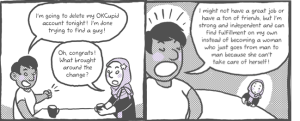
Two people working on plan at desk
The term gentrification has become a buzzword to describe so many things— top knots, beards, an influx of microbreweries or cheese shops. What’s downplayed is how absolutely threatening and dangerous it is.
The pervasive threat of violence hangs in the distance between the kitchen tables of hurting families who are being pushed out of their homes and the boardrooms of corporations where these destructive housing policies and urban renewal planning is devised.
In our ongoing fight for income equality and racial justice, nothing is more important than housing.
For the purposes of this article, I ought to begin by defining gentrification. Because what people may perceive as gentrification can vary and misconstrued definitions can make identifying the impacts of gentrification tough.
The term is often mistakenly intermixed with urban revitalization or used to describe any investment within a neighborhood. These definitions miss the most important element.
Gentrification is not only about investments into a neighborhood.
Gentrification is the process that dislocates traditional low-income residents (usually, residents of color) and changes the social fabric of the neighborhood.
Research by the Brookings Institute provides the best working definition of gentrification: the process by which higher income households displace significant numbers of lower income residents of a neighborhood, thus changing the essential character and flavor of the neighborhood.
Based on this definition, three specific conditions must be met: displacement of original residents, physical upgrading of most of the housing stock, and change in neighborhoods.
Every time the phone rings at the Urban Displacement Project — a UCLA and UC Berkeley collaboration with the aim of understanding the nature of gentrification and displacement in the bay area — the person on the line shares a bevy of strategies: rent control, impact fees, inclusionary housing. They even made this handy interactive policy map.
Neighborhood improvement means different things to different people. One person’s cute café can also be perceived as a gentrification station.
With increased deregulation and the growing influence of corporations in public spaces, developers and corporations often have different — and competing — interests than longtime residents.
The following are five tactics to fight gentrification that still boost economic development.
1. Know Your Neighbors
I’m certainly not the first person to think of getting to know our neighbors as a way forward. I’m sure many of you read this piece published in the Washington Post last year about white supremacist, Derek Black, who changed his viewpoints after attending Matthew Stevenson’s Shabbat dinner.
Stevenson was the only Orthodox Jew at a school with little Jewish infrastructure so he began cooking for a small group of students in his apartment every Friday night.
In knowing your neighbors and speaking to people on your block you can build connections and alliances. If you are a gentrifier, talk to the people who are being gentrified. If gentrifiers are moving in on your community and you’re afraid of being pushed out, talk to them.
What I’m asking you to do is a big thing…we have to be willing to break our own hearts and ditch old dusty judge-y narratives — fill your table with love.
What I’m suggesting here is that you talk to people. These connections are the best foundations for building community.
This alone will not fight gentrification but can do wonders in conjunction with the remaining four tactics.
More to this point, according to Matthew Desmond’s Pulitzer Prize Winning, Evicted, “even in the most desolate areas of American cities, evictions used to be rare. They used to draw crowds. Eviction riots erupted during the Depression, even though the number of poor families who faced eviction each year was a fraction of what it is today.”
A New York Times account of community resistance to the eviction of three Bronx families in February 1932 observed, “Probably because of the cold, the crowd numbered only 1,000.”
Sometimes neighbors confronted the marshals directly, sitting on the evicted family’s furniture to prevent its removal or moving the family back in despite the judge’s orders.
How can we reintroduce this idea of neighborhood solidarity back into our communities?
2. Save The Public Domain
Parks, schools, libraries, roads, community centers — they are all getting privatized.
One way to resist this is by connecting with neighbors and activists to protect and expand our public areas — keep libraries open.
For example, Paula Segal of NYC started 596 Acres after getting a map that showed all the vacant public land in Brooklyn. Today 596 empowers residents to act as stewards of public land.
Most cities host a public land trust where you can get a map of unused land in your area and make it a usable, friendly space.
Residents in a former logging town in Felton, California came together and bought out their privately owned water system. These solutions are created after getting together with our neighbors.
There was a time when I had no money and there were other times when I was told I couldn’t go anywhere and the only thing that was free was reading and the only way I could travel was through words so it was words that saved my life.
Don’t let needed supports get driven out by high rents or big businesses.
3. Demand Affordable Housing
Gentrification is not about individual acts, it’s about systemic economic violence based on decades of racist housing policy that has denied people of color, especially black people, access to fair and equal housing. Therefore gentrification cannot happen without housing inequality.
Protecting existing affordable housing and demanding that newly built housing is affordable is a key strategy to fighting gentrification.
According to an April 2014 analysis by Zillow Real Estate Research, between 2000 and 2014 median household income rose 25% and rents increased by nearly 53%.
The analysis also found that residents of Los Angeles, Miami, San Francisco and New York paid the highest portions of their income on rent. The U.S. Department of Housing and Urban Development considers housing to be unaffordable when its costs exceed 30% of a family’s income — in Los Angeles, the average was 35%.
A 2014 report from Harvard’s Joint Center for Housing Studies found that just over half of U.S. households paid more than 30% of their income toward rent in 2013, up from 38% of households in 2000.
Two trends accompany rising rents in the United States — growing urban inequality and a widening gap between the demand and supply of affordable housing.
Join with others to demand two things: that any new development allocate a certain amount of units for affordable housing and that your city change its definition of “affordable.”
The city should use neighborhood‐level median incomes and give priority to those making less than 60% of median income, especially people who are homeless or at risk of homelessness. All housing subsidized with public funds should be protected as affordable in perpetuity by using regulatory agreements and community land trusts.
Finally, the city’s rent laws must be strengthened to protect the lowest income tenants, stop evictions, and prosecute landlords that evade the laws.
4. Regulate Bank Owned Property
Demand an end to the public giveaways to developers, and join the movement to charge banks for the blight they bring into communities. Bank owned properties that are in blight are often public health and safety risks.
I’ll never forget walking through a bank owned, blighted home in South L.A. Amidst the debris — the empty bottles of beer, the pipes, the phone numbers of girls who were being sexually trafficked on the doors — there was a child’s homework.
Cities should charge a fine to banks for every day their home is blighted, as well as increase taxes on habitable housing that is vacant for more than a year and expropriate housing vacant more than two years.
South L.A. residents, community activists with A.C.C.E., and SEIU 721, canvassed bank owned homes in their neighborhood.
They made a map of these homes, spoke to neighbors, and were able to rate the level of blight that existed in these homes. It turned out the most blighted homes were hubs for criminal activity.
Residents got together and took city council members — along with media — on a tour of the bank owned homes in a campaign they called Banks Make Bad Neighbors.
As a result, the city passed a blight ordinance that charged a $1000 a day fine for each day a bank owned property was in blight.
5. Confront Elected Officials
There’s a movement across the nation that combats gentrification and supports affordable housing called #Homes4All.
Part of securing safe housing often involves fighting for legislation that requires input when it comes to city planning or equitable land use. A great national resource is Right to the City Alliance, they are composed of dozens of place-based community organizations.
If you’re passionate about affordable housing I suggest you get in touch with them there and see how you can get involved.
You can also download this handy national rent control toolkit.
***
This is your happy ending. If you’re an artist. If you’re writing, or cooking, or painting, or dancing, or drawing — whatever it is that makes you happy — if you make what’s in your heart you ignite people.
You light a fire and people will follow that fire until they find their way home.
I need you to take hold of my hand and pull us out of this crap.
So start wherever you’re at. You don’t have to join your neighborhood council, although that’s a good place to be engaged.
You can attend meetings in your neighborhood, or in your building, or start an association, or join a tenant’s union — but maybe you just host a dinner for people nearby once a week.
Maybe you exchange phone numbers with the people to the left and to the right of you. We take to the streets, fists in air, chests out, signs in hand, banners, megaphones — ¡el pueblo unido jamás será vencido!
The people united will never be divided! It’s what we holler and it’s what works.
[do_widget id=’text-101′]
Melissa Chadburn is an Everyday Feminism Reporting Fellow. Melissa has written for Guernica, Buzzfeed, Poets & Writers, Salon, American Public Media’s Marketplace, Al Jazeera America and dozens of other places. She is a fellow for The Economic Hardship Reporting Project. Her essay, “The Throwaways,” received notable mention in Best American Essays and Best American Nonrequired Reading. Her debut novel, A Tiny Upward Shove, is forthcoming with Farrar, Straus, and Giroux.
Search our 3000+ articles!
Read our articles about:
Our online racial justice training
Used by hundreds of universities, non-profits, and businesses.
Click to learn more
Most Read Articles
- « Previous
- 1
- …
- 30
- 31
- 32



















